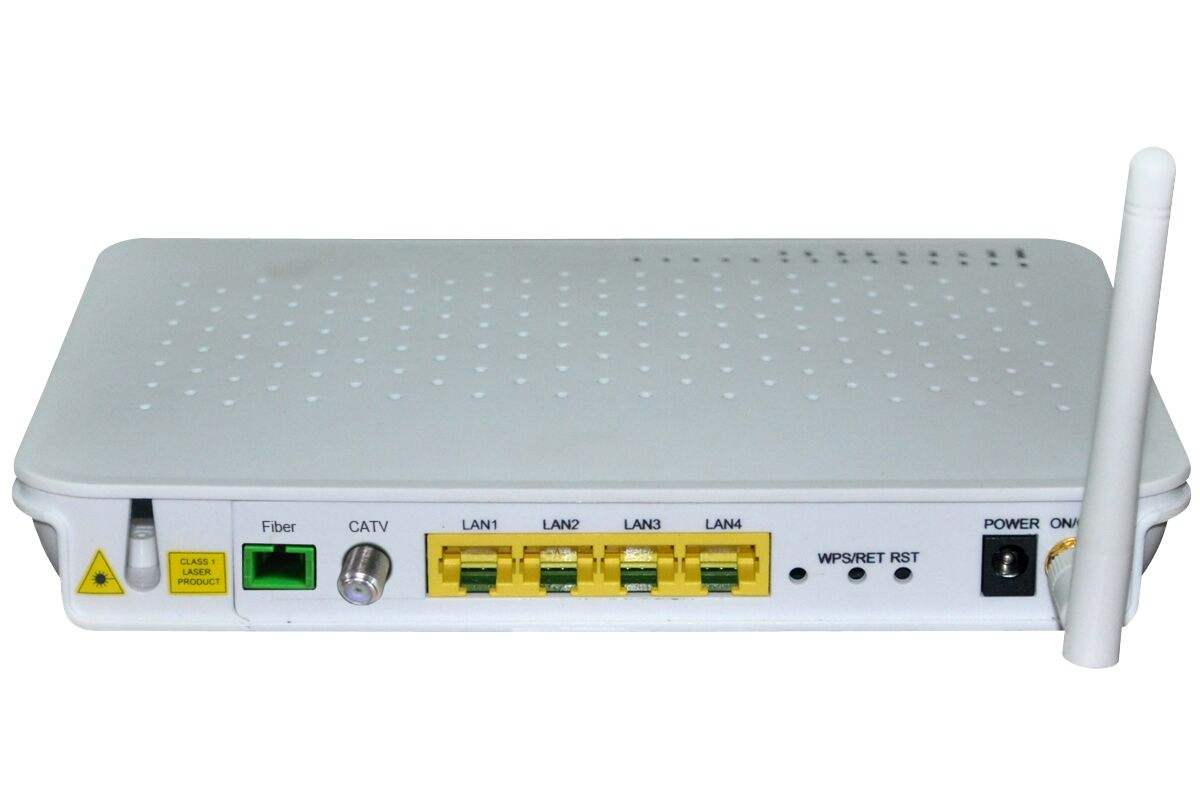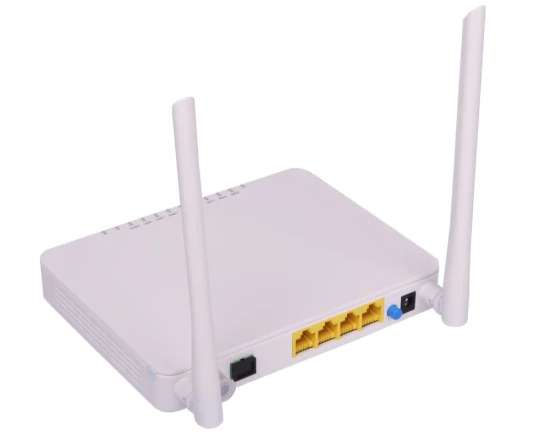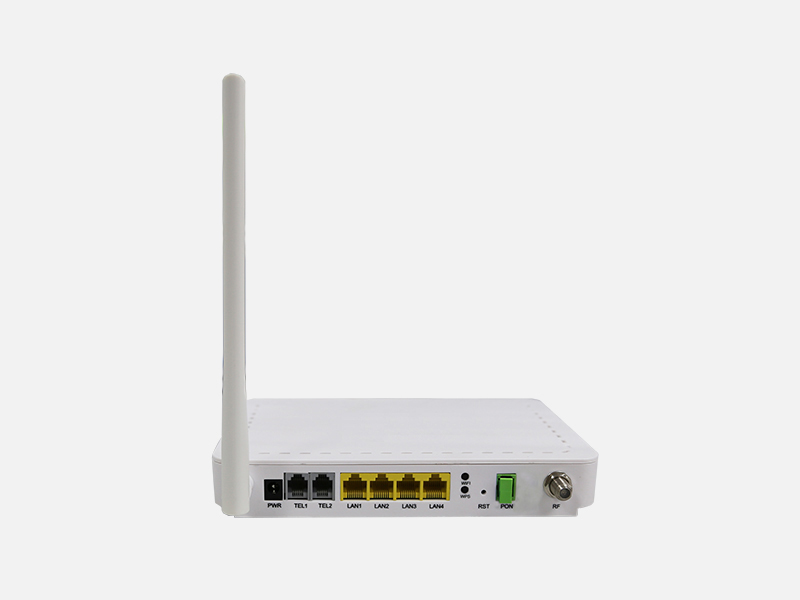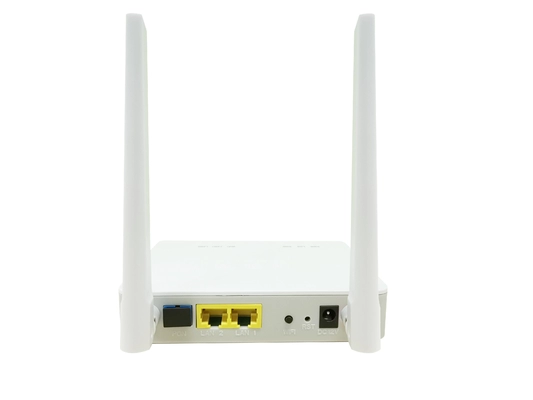Demystifying ONU: A Comprehensive Overview of Types and Functions

The Significance of ONU in Modern Networks
The Optical Network Unit (ONU) plays a crucial role in modern networks, acting as a bridge between the optical line terminal (OLT) and customer premises equipment (CPE). It serves as a vital connection point, enabling the transmission of data, voice, and video signals over fiber optic networks. As a key component of the network infrastructure, ONU connects end-user devices to the high-speed capabilities of fiber optic technology. With its ability to facilitate seamless communication between users and the network, ONU ensures efficient connectivity and enables the delivery of various services over fiber optic lines.
Exploring the Role of PON in Fiber Optic Infrastructure
Passive Optical Networks (PON) are a critical component of fiber optic infrastructure, enabling high-speed data transmission over optical fibers. PON utilizes fiber optic cables to deliver data, voice, and video signals directly to end-users. Unlike traditional networks that require active components like repeaters or amplifiers, PON eliminates the need for such devices between the service provider and the end-user.
Understanding Passive Optical Networks (PON)
Passive Optical Networks (PON) are designed to maximize the benefits of fiber optic technology in network infrastructure. By utilizing optical fibers, PON enables the efficient transmission of data over long distances without signal degradation. The optical fibers act as a medium for transmitting information through pulses of light, allowing for faster and more reliable communication compared to traditional copper-based networks.
Advantages of PON in Fiber Optic Networks
PON offers numerous advantages in fiber optic networks:
Increased Bandwidth Capacity: PON provides significantly higher bandwidth capacity compared to other network technologies. This allows for faster internet connections and supports bandwidth-intensive applications such as streaming high-definition videos or online gaming.
Cost-Effectiveness: Implementing PON can reduce the overall cost of network deployment and maintenance. With fewer active components required, there is less equipment to install and maintain, resulting in lower operational costs for service providers.
Support for Multiple Services: PON has the capability to support multiple services over a single fiber optic line. This includes internet access, voice communication, and video streaming services. By consolidating these services onto one infrastructure, service providers can streamline their operations and offer bundled packages to customers.
In summary, Passive Optical Networks (PON) play a crucial role in modern fiber optic infrastructure by providing high-speed data transmission capabilities while reducing costs and supporting various services over a single fiber optic line.

A Detailed Analysis of Different ONU Types and Their Functions
Optical Network Units (ONUs) come in various types, each with its own distinct features and functions. Let's explore these different types and understand their capabilities.
ONU Types and Their Distinct Features
There are several types of ONUs available in the market, including Gigabit Ethernet ONU, EPON ONU, and GPON ONU.
Gigabit Ethernet ONU: This type of ONU offers high-speed connectivity and is particularly suitable for business applications. It provides fast data transfer rates, allowing businesses to efficiently handle large volumes of data.
EPON ONU (Ethernet Passive Optical Network): EPON ONUs are designed for residential and commercial users. They offer efficient data transmission over fiber optic networks, enabling reliable internet access for homes and small businesses.
GPON ONU (Gigabit Passive Optical Network): GPON ONUs also provide efficient data transmission for residential and commercial users. They offer higher bandwidth capacity compared to EPON ONUs, making them suitable for more demanding applications.
Functions and Capabilities of ONU
The primary function of an ONU is to facilitate the conversion of optical signals to electrical signals that can be used by end-user devices. However, ONUs offer additional functions that contribute to the overall performance of fiber optic networks:
Secure Data Transmission: ONUs ensure secure and reliable data transmission over fiber optic networks. They employ encryption techniques to protect sensitive information from unauthorized access or interception.
Network Protocol Support: ONUs support various network protocols, allowing seamless integration with existing network infrastructure. This ensures compatibility with different devices and enables smooth communication across the network.
Quality of Service (QoS) Features: ONUs provide QoS features that prioritize certain types of traffic over others. This ensures that critical applications such as voice or video streaming receive sufficient bandwidth and low latency, resulting in a better user experience.
In summary, different types of ONUs offer unique features tailored to specific requirements. Whether it's high-speed connectivity for business applications or efficient data transmission for residential users, selecting the right type of ONU is crucial in optimizing network performance.
Unlocking the Benefits of ONU in Fiber Optic Networks and Selecting the Right ONU
Utilizing an Optical Network Unit (ONU) in fiber optic networks offers several benefits that enhance network performance and support specific requirements.
Benefits of Utilizing ONU in Fiber Optic Networks
Enhanced Network Performance: ONU plays a crucial role in reducing signal loss and improving signal quality. By minimizing signal degradation, ONUs ensure reliable data transmission over long distances, resulting in improved network performance.
High-Speed Internet Access: With the ability to handle high-speed connectivity, ONUs enable fast internet access for users. This is particularly beneficial for bandwidth-intensive applications such as streaming high-definition videos or online gaming, where a stable and high-speed connection is essential.
Scalability and Flexibility: ONUs promote scalability and flexibility in network expansion and upgrades. They can easily accommodate additional users or devices without significant infrastructure changes. This scalability allows networks to grow as demand increases, making ONUs a valuable asset for future-proofing network infrastructure.
Selecting the Right ONU for Specific Requirements
When selecting an ONU for your specific requirements, consider the following factors:
Data Transfer Speed: Evaluate the required data transfer speed based on your network's needs. Different types of ONUs offer varying speeds, so choose one that aligns with your desired level of performance.
Port Availability: Consider the number of ports required to connect end-user devices. Ensure that the selected ONU has sufficient ports to accommodate all necessary connections.
Compatibility with Network Infrastructure: Verify compatibility between the chosen ONU and your existing network infrastructure. This includes compatibility with protocols, interfaces, and management systems to ensure seamless integration into your network environment.
To make an informed decision when selecting an ONU, consult with network professionals or vendors who can provide expert guidance based on your specific requirements. Their expertise will help you identify the most suitable ONU that meets your needs effectively.

A Step-by-Step Guide to ONU Installation, Setup, and Common Troubleshooting
Proper installation, setup, and troubleshooting are essential for the smooth operation of an Optical Network Unit (ONU). Here is a step-by-step guide to help you navigate through the process.
Installation and Setup Process of ONU
Physical Installation: Begin by ensuring the proper physical installation of the ONU. This includes connecting all necessary cables, such as fiber optic cables and power supply cables, securely to their respective ports.
Configuration: Once the physical installation is complete, configure the ONU settings according to your network requirements. This may involve setting up an IP address, VLAN settings, security parameters, and other relevant configurations.
Testing and Verification: After configuring the ONU settings, perform necessary tests to verify the successful installation and connectivity of the ONU. Test various functionalities such as data transmission, voice communication, or video streaming to ensure everything is functioning as expected.
Common Troubleshooting Tips for ONU
Check Physical Connections: If you encounter any issues with your ONU, start by checking all physical connections and cables. Ensure that they are properly connected without any loose or damaged components.
Verify Network Settings: Verify that your network settings and configurations align with the requirements of your network infrastructure. Check IP addresses, subnet masks, gateway settings, VLAN configurations, or any other relevant parameters.
Consult Manufacturer's Documentation or Technical Support: If troubleshooting steps do not resolve the issue, consult the manufacturer's documentation or contact technical support for further assistance. They can provide specific guidance based on your ONU model and help troubleshoot complex issues.
By following this step-by-step guide during installation, setup process, and troubleshooting common problems with ONUs, you can ensure a smooth experience with your fiber optic network device.
The Future of ONU Technology and the Importance of ONU in Modern Networks
As technology continues to advance, so does Optical Network Unit (ONU) technology. ONU is evolving to support higher data transfer speeds and increased network capacity, keeping up with the growing demands of modern networks. Advancements in ONU hardware and software enable enhanced security features, such as encryption and authentication protocols, ensuring secure data transmission over fiber optic networks. Additionally, improved network management capabilities allow for better monitoring and control of network resources.
The importance of ONU in modern networks cannot be overstated. It enables the delivery of high-speed internet, voice, and video services to end-users, supporting their communication needs. Moreover, ONU plays a vital role in the growth of digital infrastructure by providing the backbone for reliable connectivity. As industries undergo digital transformation and rely more on cloud-based applications and services, the significance of ONU in ensuring seamless connectivity becomes even more apparent. The increasing demand for bandwidth-intensive applications further highlights the importance of ONU in modern networks.

The Future of ONU Technology and the Importance of ONU in Modern Networks
ONU technology continues to advance, driving the expansion and improvement of fiber optic networks. With its crucial role in delivering high-speed internet and supporting various services over fiber optic infrastructure, the importance of ONU in modern networks cannot be overstated. As the demand for faster and more reliable connectivity grows, ONUs will play a vital role in meeting these needs. As technology evolves, we can expect further advancements in ONU hardware and software, enabling even higher data transfer speeds, increased network capacity, enhanced security features, and improved network management capabilities. The future of ONU technology is bright as it continues to shape the digital landscape and support the growth of modern networks.
See Also
The Future of Fiber Optic: Unveiling the Power of Invisible Fiber Cable
The Future of Fiber Optic Outdoor Terminal Distribution Boxes for FTTx
The Future of Fiber Optic Cable Splice Closures: Trends and Innovations
Exploring the Applications of LC SC Duplex Fiber Optic Adapters
About US
Follow Us
AnetFiber company's main products are indoor and outdoor optical fiber cables, outdoor waterproof pre-connected fiber-to-the-home products, PLC optical fiber splitters, optical fiber jumpers and pigtails, MTP®/MPO high-density big data product solutions, optical fiber field quick connectors and research and development molding, injection molding and production of optical fiber distribution boxes, optical fiber chassis cabinets, the market has expanded to the world, Europe, America, Asia, the Middle East and Latin America.
Address
Shenzhen City, Baoan District, Yanluo Street, Tangxiayong Community, Yangyong Industrial Road, Tonggangda New Energy Vehicle Park 406
Contacts
+86 199 2655 3586

